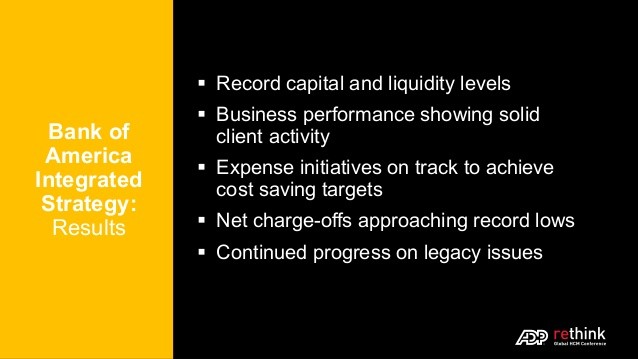Rethink what managed accounts offer
Post on: 26 Август, 2015 No Comment

Rewind to 2004: Separately managed accounts were hot. Forecasters were boldly predicting that total SMA assets would exceed the $1 trillion threshold by 2007, buoyed by several years of robust growth. In the managed accounts segment of the financial market, however, prognostication can be risky business. By the time 2007 arrived, those lofty predictions softened significantly. The Money Management Institute, a New York City organization representing the managed accounts industry, still expects total SMA assets will reach the magic $1 trillion milestone, but not until sometime in 2009.
Here in 2008, another form of managed account, the unified managed account, a broader — and according to some experts, more user-friendly — instrument than the SMA, is exceeding expectations. UMA assets, according to Cerulli Associates, a financial research and consulting firm in Boston, increased by 30 percent from 2006 to 2007. From the end of 2005 to the end of 2007, UMA assets more than quadrupled, from $8.2 billion to $35.5 billion. Meanwhile, as of the fourth quarter of 2007, assets in SMAs stood at $814 billion, having increased 10 percent from the same period in 2006.
SMAs may not be living up to predictions, but they remain a vital portfolio diversification tool for baby boomers and their advisors. A few years ago SMAs were viewed mostly as a stand-alone product best suited to wealthy investors. While still popular in their own right, separate accounts today are widely seen as one component of UMAs, where they typically reside alongside other instruments such as ETFs, mutual fund advisory programs and other conventional and alternative investments.
The separately managed account is very much alive, says Harry J. Clark, CFP, president and CEO of the Clark Capital Management Group, an independent investment advisory firm in Philadelphia, Pa. It’s just being used differently, as a component of the unified managed account. It has become more of a support product than a core product, especially for larger investors.
The separately managed account, adds Steve Gresham, head of products and marketing at Phoenix Investment Partners, a money management firm in Hartford, Conn. was the original [managed account] product, and we’ve seen a lot of innovation with it as an individual part. But now, I think, the innovation is in the harmonization of those individual parts.
Not that the SMA has lost viability as a stand-alone instrument. Wealthy investors with $2 million or more to allocate among managed accounts, and for whom customization and tax efficiency are major priorities, might be best suited to divide those funds among a diverse set of separate accounts instead of putting the money into a UMA, says Chuck Widger, chairman and CEO of Brinker Capital, an investment management firm in Berwyn, Pa.
Customization remains a strong justification for using SMAs as a core investment, Clark says. On one hand, he notes, investors who want exposure to a specific sector or country can get it with an SMA. On the other hand, separate accounts also cater to clients who want to exclude specific investments from their portfolios, due to social sensitivities, for example, or because they already are heavily exposed to an individual stock or sector via a pension or retirement plan. Investors can also freely drop and add managers based on the performance of their accounts. In addition, lower turnover in their investment holdings can make SMAs more tax-efficient than other options such as mutual funds, Gresham points out. SMAs also tend to be more transparent than hedge funds, an important distinction for investors who prefer to know exactly where their money is going.
The UMA is surging in popularity, experts say, because it can accomplish many of the things an SMA can, but often in a more efficient manner.
The real challenge is, ‘Can you achieve investor success with a specific vehicle, whatever that vehicle is? ‘ Gresham says. Most people, to meet their objectives, are going to require a certain level of diversification. You need a lot of money if you’re going to achieve the desired level of diversity through separately managed accounts, and to do it in an efficient manner.
The cost of SMAs can be a major issue for investors who don’t have millions of dollars to allocate among multiple accounts in the quest for diversity.
The fees [associated with separate accounts] can be very high — usually anywhere between 1.25 and 2.7 percent, depending on account size, says Marcy Burton, principal and partner at Partnervest Financial Group in Santa Barbara, Calif. For smaller investors with an account of $300,000 or $400,000, the fees can represent a significant bite.
Burton is also skeptical about the purported tax-efficiency benefits associated with the SMA as a stand-alone instrument.
It’s not clear that they are more tax-efficient than a separately managed ETF portfolio, for example, she says.
Tax management with SMAs is one area where advisors can really make a difference for their clients, notes Widger. Advisors who actively manage client SMA holdings with an eye toward tax efficiency can significantly reduce tax exposure for clients. In some cases, according to Widger, the savings from more proactive engagement in tax management are really quite impressive — 50 basis points or more, according to our figures.
Also, Widger says, from an administrative point of view, the unified account is much simpler than the separate account.
An overlay manager oversees a UMA account, giving it an extra layer of management relative to the SMA. Furthermore, UMA holders get a single statement indicating how their investment is performing. Investors with money in multiple SMAs will receive separate statements from each account. However, Widger hints that there soon could be an SMA product that addresses those administrative shortcomings — a separate account whose administrative infrastructure is similar to that of a UMA.

Still, for investors who prefer to gain portfolio diversity via a managed account that comes with an overlay manager, less paperwork, lower fees (in some cases) and less labor-intensive tax management responsibilities, the UMA might be a better fit than an SMA (or multiple separate accounts). The sweet spot for UMAs, according to Widger, is the investor with $500,000 to $2 million to allocate to a managed account.
It gives that person diversification in investment class and style, plus the opportunity to manage taxes.
The baby boomer generation is large and diverse enough that experts see it capable of sustaining robust growth in managed accounts in general, and in SMAs and UMAs in particular. A significant contingent of boomers will have the assets to justify a core investment strategy built upon holdings in multiple SMAs; likewise there will be plenty of boomers whose balance sheet dictates a UMA-based strategy.
You’re going to find that many, many boomers have a half-million dollars or more to invest, Widger says.
What’s clear, Burton says, is that managed accounts will have a prominent place in many boomer portfolios. Boomers will, I believe, want these managed accounts, whether we’re talking about an SMA, UMA or an ETF portfolio. These tools are going to help [boomers] through the complexities they are going to face heading into and during retirement.
One thing UMAs and SMAs have in common, she says, is their ability to coax clients to think more about their portfolios and the individual investments that comprise them.
Managed accounts really support active [client] engagement. That’s a good thing.
*Questions, Comments, Thoughts? Let’s hear it! Please use the form below.














